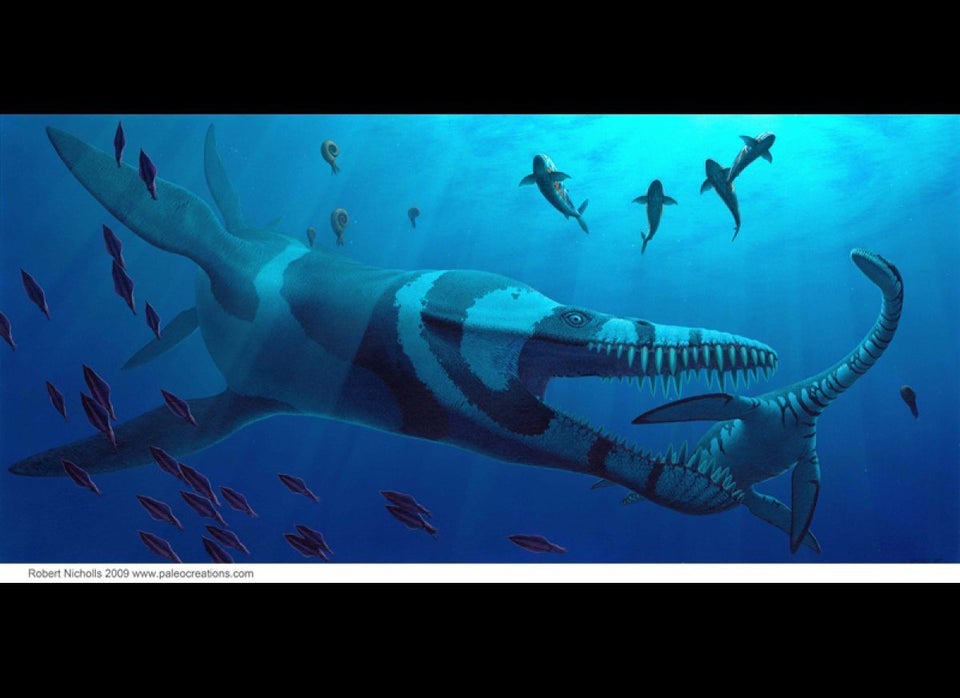Scientists have long marveled at the immaculately preserved fossils unearthed from ancient lake sediments in northeastern China. The former creatures—including fish, birds, small dinosaurs, and mammals—still sport the outlines of muscles, skin, and feathers thanks to the fine-grained volcanic ash that blanketed the carcasses and then hardened into rock. Now, new analyses of the remains show that the material that entombed the animals also killed them, overwhelming them in a hot cloud of ash akin to the one that destroyed the Roman city of Pompeii nearly 2000 years ago.
The so-called Jehol fossils, named after a mythical land of Chinese folklore, date to between 120 million and 130 million years ago and are noteworthy in a number of ways. Besides their remarkable preservation, which even saved traces of delicate structures like air bladders in fish, researchers have often found an unexpected juxtaposition of creatures in the same layer of ancient lake sediment. Small dinosaurs such as Psittacosaurus and birds such as Confuciusornis lie next to fish, for example. Scientists have long speculated that this odd mix was a sign of mass catastrophe, says Baoyu Jiang, a sedimentologist at Nanjing University in China, but they weren’t sure how it could have occurred. Also a mystery, he notes, is how the relatively undamaged carcasses of land animals—especially those of birds, whose remains typically float and are fragile due to their light bones—ended up intact at the bottom of a lake.
Now, Jiang and his colleagues have taken a closer look at the Jehol fossils—literally. Researchers have long noted that the remains of soft tissues were often sheathed in a thin, dark carbon-rich layer. But the team found that under the microscope, cells in the tissues of fossils from several sites had been blown open, and they had a charcoal-like appearance. In addition, the surfaces of bones often showed a distinct sort of cracking typically seen only when a living or freshly dead creature is exposed to intense heat, Jiang says. The postures of the Jehol fossils, with muscles and tendons contracted, is also a clue that the carcasses were exposed to extreme heat. But the fossils of fish don’t appear to show this heat-related damage.
Altogether, the evidence suggests that the land animals entombed in the ancient Chinese lakes were killed by a hot cloud of volcanic ash that then swept them into the lake, the researchers report today in Nature Communications. What is now northeastern China was rife with volcanic activity at the time, Jiang says. Although it’s possible that flying birds could have been overcome by poisonous volcanic gases and fallen directly into the ancient lakes, that doesn’t explain how the other nonaquatic animals got there, he says. It’s not likely that the carcasses were carried into the lakes by streams, Jiang explains, because that would have damaged the remains. Also, he notes, the fossils would have been surrounded by silt or mud rather than fine-grained volcanic ash. Although scientists had previously noted the Jehol fossils were surrounded by tiny bits of volcanic rock, they hadn’t linked the ash to the death of the creatures; they’d only suggested that the fine-grained material coincidentally rained down to blanket a normal lake-bottom accumulation of dead creatures, Jiang says.
The evidence uncovered by Jiang and his colleagues “is very convincing,” says Janet Monge, an anthropologist at the University of Pennsylvania Museum of Archaeology and Anthropology who has studied the human remains unearthed at Pompeii. The Chinese fossils “have a very particular type of fracture pattern, a classic example of bone failure associated with extreme heat,” she notes. “I’ve never seen anything like it outside of Pompeii.”
Previous studies have suggested the volcanic ash cloud that smothered the Roman city of Pompeii in 79 C.E. was probably about 400°C. But the heat damage to the bones in the Chinese fossils is superficial compared with that seen in the human remains unearthed at Pompeii, says Antoine Pierre-Olivier, a paleontologist at the Institute of Evolutionary Sciences of Montpellier in France. Therefore, he suggests, the ash cloud that doomed the Jehol biota was probably considerably cooler, maybe between 200°C and 300°C.
The remarkable preservation of the Jehol fossils stems from “a perfect combination of factors,” Pierre-Olivier says—possibly because the lakes where the carcasses ended up were relatively far from the ancient, region-smothering eruptions. Because the ash cloud was relatively cool, it would not have incinerated the land animals caught in its path, and its reasonably slow speed would have allowed the carcasses to be transported and preserved intact. An extremely hot, turbulent cloud of ash near an eruption, on the other hand, would have left few, if any, fossils behind.
This story has been provided by AAAS, the non-profit science society, and its international journal, Science.
